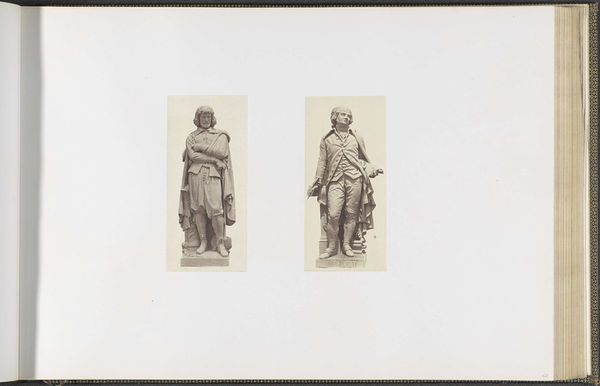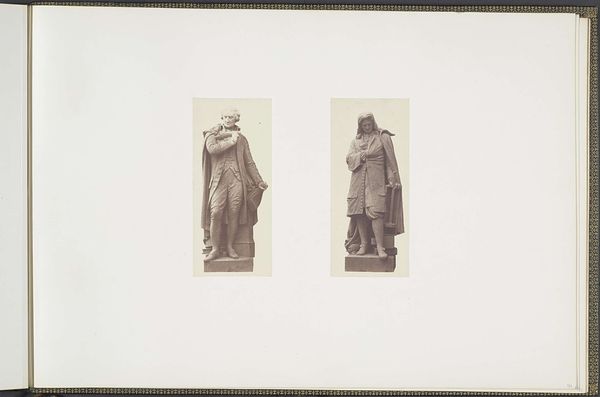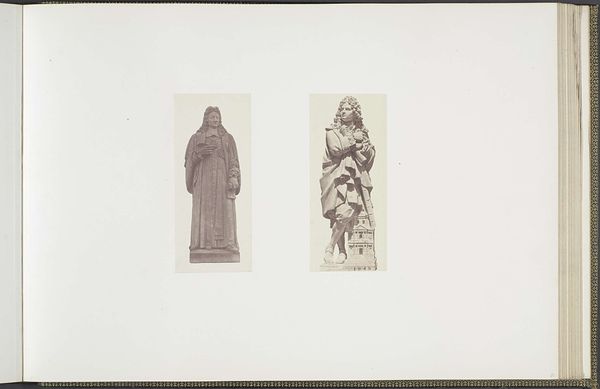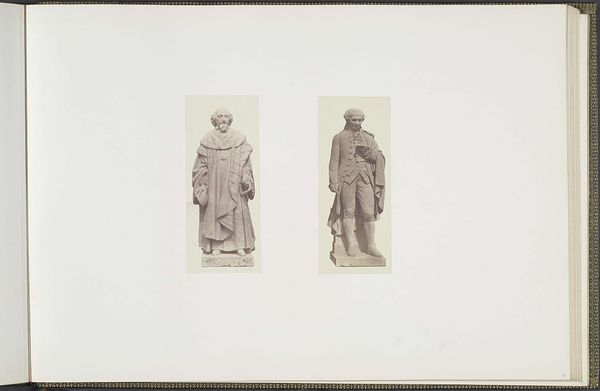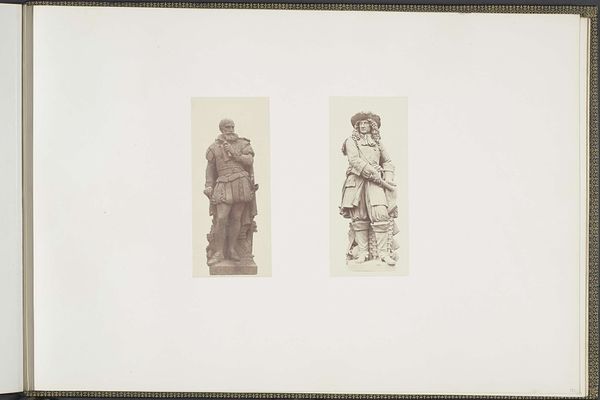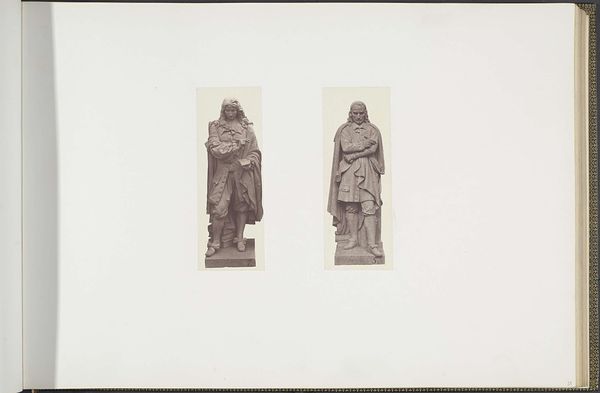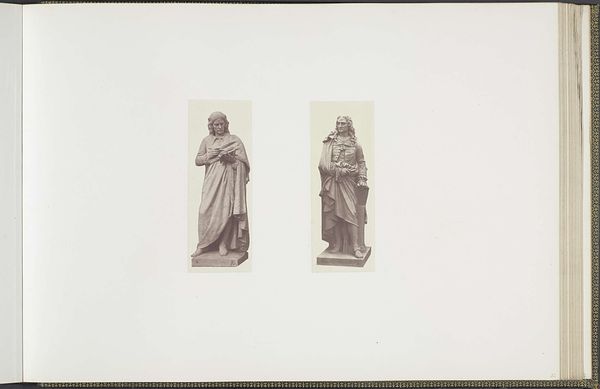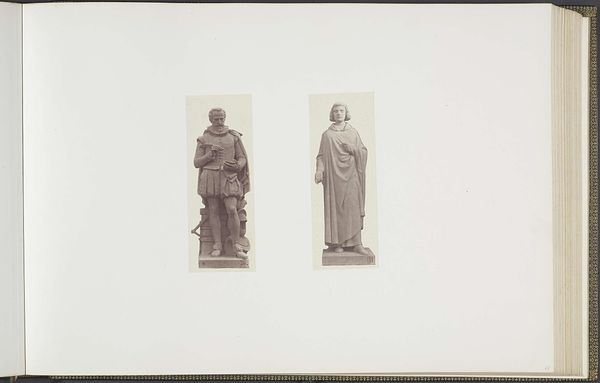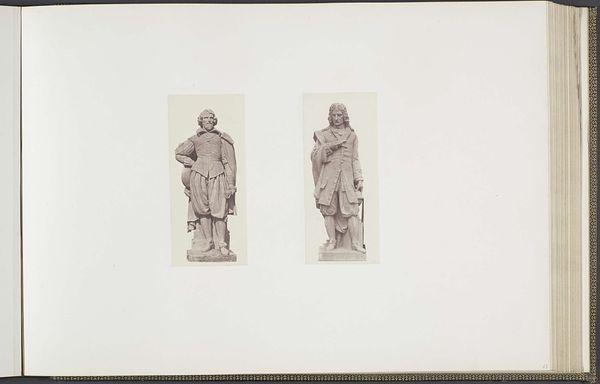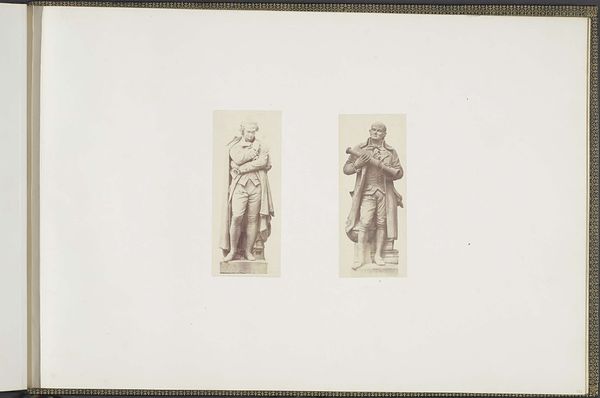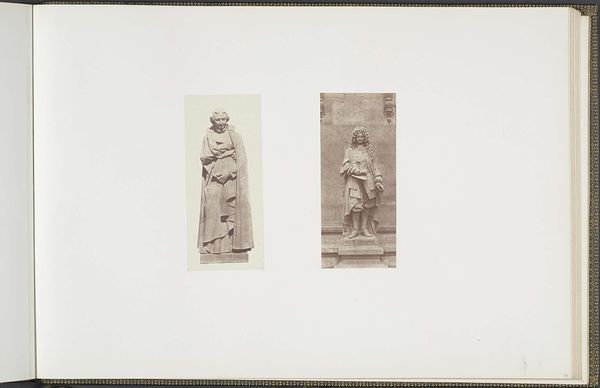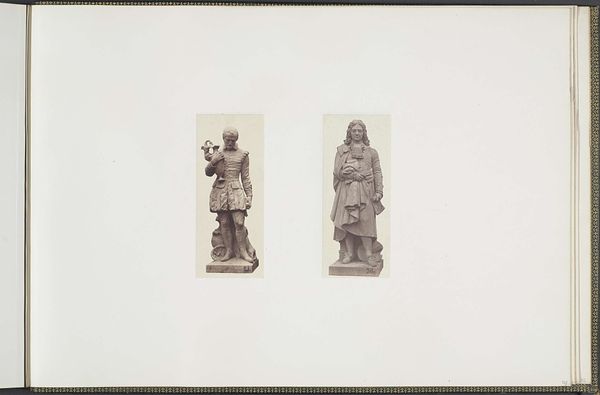
Gipsmodellen voor beeldhouwwerken op het Palais du Louvre: links "Louvois" door Aimé Millet en rechts "Saint-Simon" door Pierre Hébert c. 1855 - 1857
0:00
0:00
edouardbaldus
Rijksmuseum
print, photography, sculpture, gelatin-silver-print
#
portrait
#
neoclacissism
# print
#
photography
#
sculpture
#
gelatin-silver-print
#
history-painting
#
academic-art
Dimensions: height 382 mm, width 560 mm
Copyright: Rijks Museum: Open Domain
Editor: This is a photograph by Edouard Baldus, from around 1855 to 1857, showing plaster models of sculptures intended for the Louvre. What immediately strikes me is how the photograph elevates these preparatory models to the status of finished works of art. What's your interpretation? Curator: Well, I see Baldus's photograph as more than just documentation. It's participating in the discourse around art and power at the time. These aren’t just studies; they’re representations of historical figures intended to shape public memory and legitimize certain narratives, which also raises questions about whose stories get told, doesn't it? Editor: Definitely. I was also thinking about how photography was still relatively new then. Was Baldus's choice of photography as a medium a statement in itself about art's accessibility and democratization, compared to, say, commissioning paintings of these sculptures? Curator: Precisely! The choice of photography allows for wider dissemination. But think about who had access to photography, who could afford prints? It's a democratizing tool, yes, but also a tool used within existing power structures. Are these monuments still standing, do you know? How do you feel Baldus is treating the concept of historical figures? Editor: It sounds like a nuanced play with accessibility and historical narrative, but there's always something being emphasized or deemphasized based on decisions, it’s cool to know this has lasting effects on modern perspectives of the artworks and people in them. Curator: Exactly. Understanding art history is about questioning the seemingly neutral presentation and acknowledging its inherent socio-political role. There are so many layers to it.
Comments
No comments
Be the first to comment and join the conversation on the ultimate creative platform.
